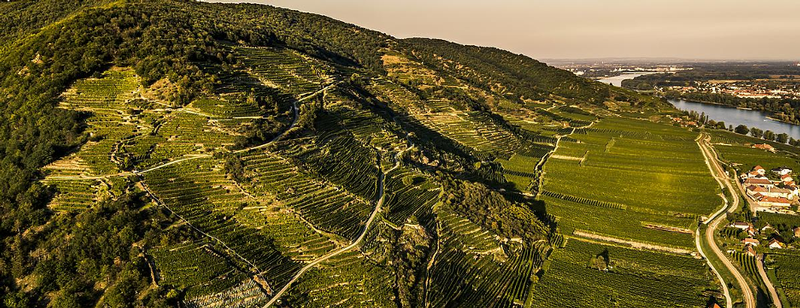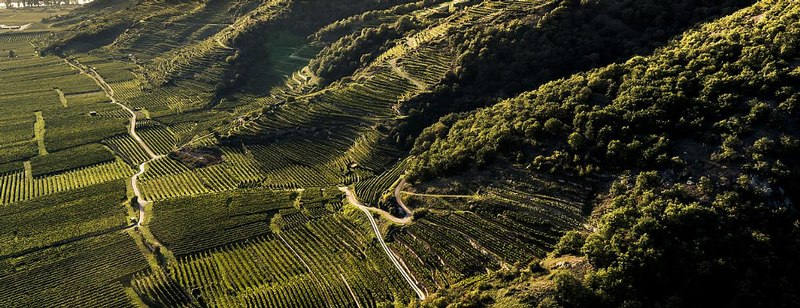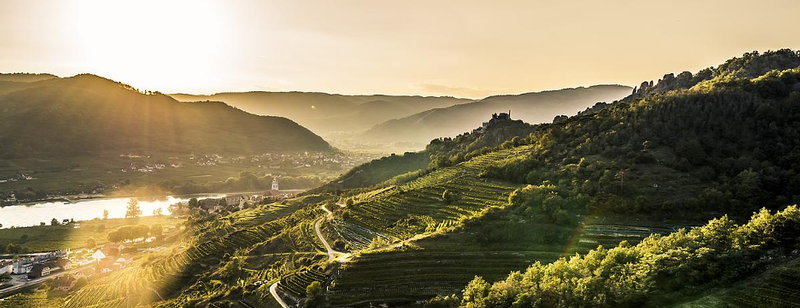Loess is More: The Vineyards of F.X. Pichler
Loess Is More: The Vineyards of F.X. Pichler
Epic F.X. Pichler Duo on sale HERE.
F.X. Pichler is one of the greatest producers of Austrian wine. They have extensive holdings in some of the Wachau’s most prestigious vineyards, vineyards that have been planted for more than 800 years in some cases. These steep, terraced hillside vineyards absorb a ton of sunlight, allowing Pichler to pick Gruner Veltliner, Riesling, and Sauvignon Blanc at maximum ripeness. Wines from the Wachau have a three-tiered system that organizes wines based on finished alcohol levels:
Steinfeder: Named after the wispy grass that grows in the vineyards. These are the lightest wines, topping out at 11.5%
Federspiel: Means “falconry”, these are the mid-weight wines, between 11.5% and 12.5%.
Smaragd: Named after sunbathing lizards, these are the most powerful Wachau wines. Must be over 12.5% alcohol, though many reach into the 14% range.
Lucas Pichler vinifies 70% of his crop as Smaragd every year, harvesting his vineyards in multiple passes. Smaragd wines are phenolically dense and weighty, the vinous opposite of the weightless, crown-capped liter bottles of Gruner that we know and love. The Pichler domaine maintains purity in these monumental wines with a dangerous balancing act. They harvest late, but their brilliant manual vineyard work carefully controls the influence of botrytis, capturing a dusting of ginger and pollen without collapsing into heaviness or rot. This viticultural balancing act is akin to walking a tightrope with an unruly toddler on your back. In the cellar, Lucas allows fermentation to progress until the wines are (functionally) dry, but arrests it before they begin malolactic fermentation, further preserving freshness and vivacity.
These Man on Wire wines are made possible by the incredible vineyards of the Wachau. Here are three of F.X. Pichler’s best.

Loibenberg
Loibenberg is large, at 76 acres, and warm, though its assorted aspects and pitches make it more climatically varied than many single vineyards. The first mention of Loibenberg dates back to 1371, and it has been cultivated ever since. This vertiginous slope averages a 40% incline, though some pitches can be as steep as 80%. These terraces require 300 man-hours bruising, fatiguing labor per acre. The soil consists of a thin layer of glacial loess over decomposed gneiss. Yes, the same loess that makes up most of the soils in the Walla Walla Valley. The vineyards of the Wachau are defined by their proportion of loess to gneiss. The thicker, more generous loess soils are ideal for Gruner Veltliner, whereas the rockier soils where the gneiss substrate is closer to the surface favors Riesling. This rocky, sandy ground provides excellent drainage, whisking away water so the vines can continue to hang their crop late into the season without risking rot. F.X. Pichler sources most of the grapes for their “M” (for “monumental”) cuvee from this historic vineyard.

Steinertal
Steinertal means “stony trench”, an appropriate name for this curving, amphitheatre-like vineyard on the eastern end of the Wachau. It is one of the coolest vineyards in the Wachau, as well as one of the rockiest. Here again you will find thin sandy loess over gneiss, though the gneiss is especially decomposed in Steinertal, allowing the roots of 70 year old Gruner Veltliner to burrow deeply into the bedrock. Pichler’s Steinertal Gruner has all of the Smaragd power that characterizes their bottlings, but the cooler climate finesse of the site shines through in its graceful midpalate and refreshing finish.

Kellerberg
Kellerberg, or “cellar mountain”, falls somewhere between Loibenberg and Steinertal in warmth. It faces the south and southeast, and its finest aspects look directly out over the Danube. The south eastern exposure has limited erosion from wind, preserving more loess in the soils. The lower slopes have more humus and loam, and as you climb you find more stones. F.X. Pichler sources their Kellerberg Riesling from a parcel high up on the hill, where the soils are thin and less vigorous. The struggling vines produce fruit with great intensity and savor, and the wines are exceptionally long lived. Expect your Pichler Rieslings to keep for at least 20 years.
The Wachau has some of the finest white wine vineyards in the world, and F.X. Pichler has many of the finest parcels within the Wachau. So, take a cue from the wines of the Wachau and sunbathe like a lizard while you savor an F.X. Pichler Gruner Veltliner or Riesling.
